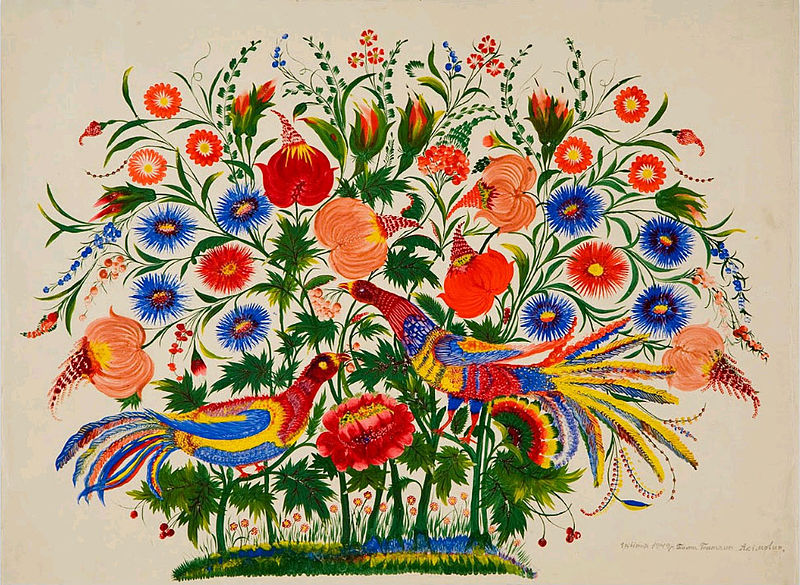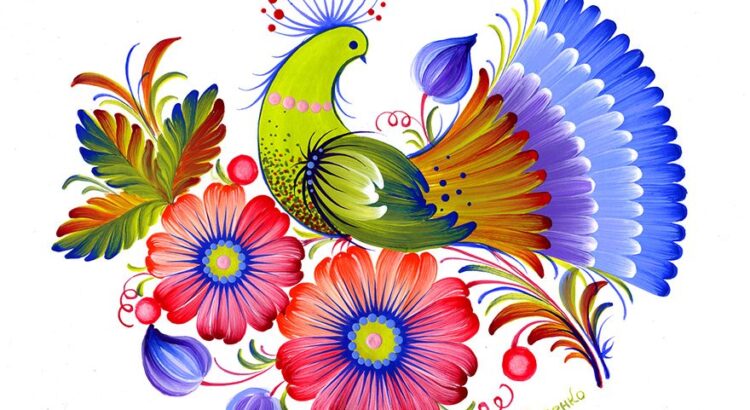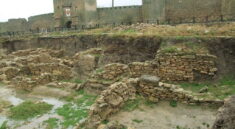Petrykivka painting (tr. Petrykivskyy rozpys) is a vibrant and distinctive style of Ukrainian folk art, originating from the village of Petrykivka in the Dnipropetrovsk Oblast of Ukraine. Characterized by its intricate floral patterns and bold use of color, Petrykivka painting has become a beloved symbol of Ukrainian culture and heritage.

History and Origins:
The origins of Petrykivka painting can be traced back to the 17th century, when Cossacks settled in the village of Petrykivka.

Key Features:
Petrykivka painting is distinguished by its use of natural motifs, such as flowers, leaves, and berries, which are arranged in intricate patterns. The paintings are typically executed in a vibrant palette of colors, including red, yellow, blue, and green.

Technique:
Petrykivka painting is created using a unique brushstroke technique known as “tsapivka”. This technique involves using a small, pointed brush to create fine, hair-like lines. The paint is applied in thin layers, allowing the natural color of the wood to show through.

Themes and Symbolism:
Petrykivka paintings often depict themes of nature, fertility, and good fortune. The floral patterns are often symbolic, representing life, growth, and abundance.
Cultural Significance:
Petrykivka painting is an important part of Ukrainian cultural heritage. It has been featured in numerous exhibitions and festivals around the world, and is considered to be one of the most distinctive forms of Ukrainian folk art.
Preservation and Revival:
In recent years, there has been a renewed interest in Petrykivka painting. This has led to the establishment of several schools and workshops dedicated to teaching the traditional techniques of this art form.
Conclusion:
Petrykivka painting is a vibrant and expressive art form that captures the essence of Ukrainian culture. With its rich history and unique style, it continues to inspire and fascinate people around the world.




